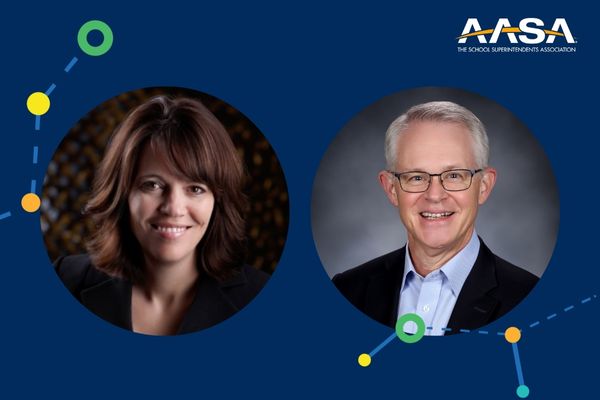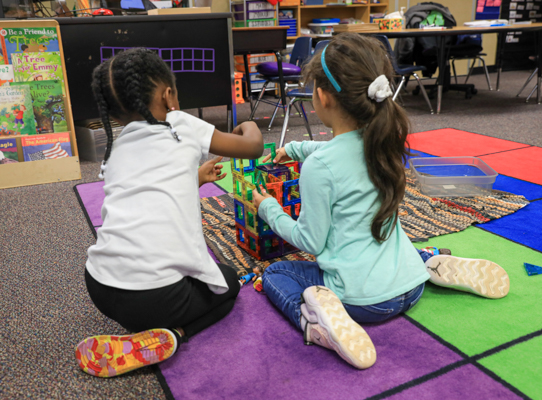From Reinventing School Lunch To Reimagining Solutions For Absenteeism, The Western Pennsylvania Learning 2025 Alliance Is Changing Lives
November 21, 2022
Imagine how much kids could learn if even lunchtime in the school cafeteria was an opportunity for deep education. At California Area School District in southwestern Pennsylvania, that’s exactly what’s happening.
One day each week, students cook a meal alongside a member of the cafeteria staff – one week it might be Thai food, another week it might be Moroccan – and they learn not just about the math and science that goes into cooking, but also about the culture that created that particular cuisine.
Everyone gets a healthy meal, and a chance to practice problem-solving skills and work on social emotional-learning. It’s a simple but brilliant formula: “They're going to cook it family-style, they're going to eat it family-style, and then they're going to clean up together,” says California Area superintendent Laura Jacob.
All this, during lunchtime.
This project doesn’t involve any huge expense. It’s something any school could try – or could have tried at any point. And yet it’s pretty hard to picture something like this happening pre-COVID.
“The pandemic gave us permission to disrupt,” Jacobs says, and many administrators are now using that permission to create a vastly more personalized and more equitable experience for their learners.
This creative spin on lunchtime at California Area actually grew from another innovative initiative in the district: Beginning last year, students could opt to create an Individualized Learning Plan (ILP), similar to the IEPs created for special-education students.
When it launched, the program served 22 students. This year, 75 kids are already enrolled and Jacob expects it to keep on growing. The school has hired two learning coaches to help teachers guide kids in shaping and working on learning plans that build on their strengths and tap into their interests. Along the way, these students are getting motivated and deeply connected to their K-12 education.
Perhaps the most exciting aspect of these fresh ideas is that they were designed to be shared with other school districts, so that no one has to reinvent these innovative wheels.
California Area is part of the Western Pennsylvania Learning 2025 Alliance, a group of 30 economically and geographically diverse districts that came together last year to innovate, collaborate and share valuable progress in hopes of helping children everywhere. Collectively, and in concert with AASA, they’re pursuing new possibilities. And their work has been noticed nationally. Two of these school districts were recently designated by AASA as “Lighthouse Districts,” among just 13 nationally. And eight of AASA’s 18 national “districts to watch” participate in this regional alliance of innovative schools.
Here’s a glimpse at what some of the other schools in the Alliance are doing in the coming school year, and how these ideas from western Pennsylvania can be replicated at schools nationwide:
Northgate School District in Pittsburgh
The “Parents as Allies in Making” initiative, part of the global Parents as Allies project launched last year, invites parents at Avalon Elementary School to become certified coaches at the school’s maker space. Students benefit on so many levels: Their parents get a deeper understanding of their STEM learning and become partners in their skill-building. And the parents become more involved as members of the school community, something that research shows can help kids thrive.
The district is also working on an ambitious mental health project funded by a Moonshot Grant. Carnegie Mellon University, Simcoach Games and Allegheny Health Network’s Chill Project therapists will collaborate with Northgate students to create game-based mental health tools and a school-based horticulture therapy site.
“Our kids are going to have the opportunity to work alongside CMU graduate students on developing these tools for mental health,” says Northgate superintendent Dr. Caroline Johns. “We've talked a lot about kids needing mental health support, which we've done through the Chill Project. But now we’re really empowering them to be the developers of mental health supports. It's pretty incredible."
Butler Area School District in Butler County, Pa.
Dr. Brian White, Butler’s superintendent, has been collaborating with the business and manufacturing community in his district to directly connect students with the careers that could shape their futures. The district’s former middle school building is transforming into a hub of workforce development, which will help students and also their parents.
The district is also putting a deep focus on attendance through an innovative approach to handling chronic absences. Chronically absent students aren’t automatically punished with suspensions – a traditional solution which only compounds the problem of missed learning days.
Instead, White has brought together school board members, folks from the county’s human services office, the sheriff’s office, mental health workers and judges to serve as a panel that looks individually at each student who reaches a threshold of absences. Why has the student been absent? What’s happening in their life and education, and what can be done to improve the situation?
Best of all, the student’s parents are invited to sit on the panel, rather than being adversaries in the process. The parents help decide what disciplinary measures might be most effective.
“If we put them on the board with the judge, they know right up front -- there's no consequence to you. This is about focusing on your child and you're gonna help guide us on what you think we can do,” White says. “'And we're dressing this up a little, because we're not going to do it at the school. We're actually going to do it at the courthouse.”
Duquesne City School District, southeast of Pittsburgh
Like many districts, Duquesne City is prioritizing social-emotional learning, with daily lessons taught by the school counselor and school psychologist. And they are continuing a creative collaboration with the Boys & Girls Clubs of Western Pennsylvania to bring the best of afterschool learning into their schools.
But perhaps most exciting is their World of Work initiative, designed to open kids’ eyes to careers that align with their interests and strengths. It’s inspired by groundbreaking work in the Cajon Valley Union School District all the way across the country in San Diego County. Duquesne is creating and teaching lesson plans that help second-graders begin to explore their interests and learn about a wide range of occupations.
At the same time, three other districts participating in a local “World of Work Alliance” – Avonworth, South Fayette and Elizabeth Forward, each in a different area of suburban Pittsburgh – will develop curricula for third, fourth and fifth graders. All four districts will then share their lesson plans with one another via a learning management system.
“One of the things I'm truly trying to focus on is breaking that cycle of poverty – giving the kids an opportunity to see themselves outside of what they basically think is available,” says Dr. Sue Mariani, Duquesne’s superintendent. “Eventually I want to use the same type of idea and work with another outside agency to work with parents, to help our parents find out what their strengths are ... and maybe get them some job coaching.”
Along with its locally-designed curriculum, this western Pennsylvania version of World of Work includes a roster of parents throughout all four districts who are available to talk with kids during “Meet a Pro” events that can take place via Zoom, in school, or at the parent’s place of work.
As that list grows, it will be “available for all those teachers, who can go into it and say, 'Hey, if I have a parent who is a farmer in South Fayette, maybe he might be willing to do Meet a Pro and maybe we take our kids out there,” says Mariani. “Eventually what we'll be able to do is really build this warehouse of data.”
Picture that: A warehouse – really, a “warehouse” of actual people with intriguing jobs, and a genuine sense of caring – with doors busted open to support a more robust learning landscape.
In western Pennsylvania – the longtime home of Fred Rogers, creator of Mister Rogers’ Neighborhood – approaches like these are sometimes dubbed “the Fred Method,” referring to Fred’s belief that the best learning is both informed by science and supportive of the “whole child,” meeting learners’ academic, social, emotional, and developmental needs. Detailed by Gregg Behr and Ryan Rydzewski in the book When You Wonder, You’re Learning: Mister Rogers’ Enduring Lessons for Raising Creative, Curious, Caring Kids, “the Fred Method” provides a blueprint for building real-life “neighborhoods” – places where parents, educators, neighbors, and others work together to help kids discover their passions and reach their full potential.
As Fred himself often said, “It’s through relationships that we learn best and grow best.” Indeed, What’s happening across western Pennsylvania in municipalities with names like California, Northgate, Butler, and Duquesne is not accidental, but rather the result of deliberate and intentional collaboration among educational leaders. It’s together that superintendents are supporting one another, learning from one another, and giving each other the “permission” to disrupt in ways that would delight America’s most-beloved neighbor – especially at this moment when we’re all looking for helpers.
It’s such a good feeling to know they’re leading our schools.
###
Bille Rondinelli and Bart Rocco are fellows at The Grable Foundation and coordinators of the Western Pennsylvania Learning 2025 Alliance
Learn more about AASA Learning 2025 here
Author
Bille Rondinelli and Bart Rocco



